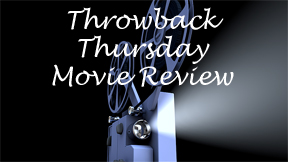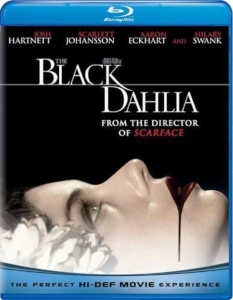“The Black Dahlia” (2006) starts comedically, with cops Lee Blanchard (Aaron Eckhart) and Bucky Bleichert (Josh Hartnett) in a boxing match to raise public support for LAPD raises. It ends in the fashion of old Hollywood drama, as Bucky and Kay (Scarlett Johansson) stand on a doorstep at twilight.
Everything in between in director Brian De Palma’s film is tonally confused, and it makes for a schizophrenic viewing experience. Some actors go way over the top, and some play it like they’re in a normal 1940s-set noir mystery.
It could’ve been played straight
Josh Friedman’s screenplay, from James Ellroy’s novel, could have been played straight as Lee and Bucky investigate the infamous real-world Black Dahlia case, where novice actress Elizabeth Short (Mia Kirshner) is found chopped into pieces.

“The Black Dahlia” (2006)
Director: Brian De Palma
Writers: Josh Friedman, James Ellroy
Stars: Josh Hartnett, Aaron Eckhart, Scarlett Johansson
That’s just part of the story, though. Lee and Bucky get bounced around from homicide to warrants to tips as their favor waxes and wanes with the brass. More screentime is spent on another case, although we get hints that Lee is obsessed with the Dahlia. Kay is Lee’s wife, but she also likes Bucky, and Lee is OK with that, so it’s a tension-free love triangle.
Bucky emerges as the main character, and Hartnett plays things cool, giving the hardboiled voiceovers we expect from the genre. For all the 1940s trappings with the sets and costumes and everyone smoking regularly and those voiceovers, De Palma isn’t interested in making a noir film so much as he wants to make fun of the style. “The Black Dahlia” plays like a satire of the film it could’ve been — but not a funny or deep one.
The film is filled with strange choices. Hilary Swank plays Madeleine, the daughter of a wealthy real-estate-boom baron. A major point is that she looks like Short; this is supposed to create suspicion about her involvement in the Dahlia case and weird us out over the fact that Bucky is sleeping with her. However, the sharp-featured Swank plainly does not look like the soft-faced Kirshner.
Not much to say about the case
For all the attention paid to creating the period vibe, I get the impression that the actors care less, or hadn’t figured out what they were doing by the time their scenes went to print. Swank’s Irish accent ducks in and out. Eckhart goes nuts with Lee’s Dahlia obsession in some scenes, but is cool as a cucumber in others.
Two hours later, I still didn’t know what I was watching, but I did feel like a straightforward shooting of the screenplay would’ve been better. It might’ve been more respectful, too. Even if the comedic attempts had any impact, we’re still talking about a murder of a real human being who would’ve perhaps lived into the 21st century otherwise. Maybe all murder mysteries are exploitative in a way, but “The Black Dahlia” especially puts a spotlight on the fact that it’s intended as entertainment.

I do know this much, though: “I Am the Night,” which explores the Dahlia case from the perspective of the 1960s and with the bonus of new information, is much more gripping both as a mystery and as an exploration of characters on the periphery of the case.
I thought perhaps “The Black Dahlia” would function as a prequel of sorts to the outstanding TNT series, and there are some mildly interesting parallels: Eccentric rich people and avant-garde art factor into both stories. But if one really wants to dig into the facts and history of the Dahlia case, “The Black Dahlia” won’t add much to your knowledge, and it also commits the sin of failing to be entertaining.

